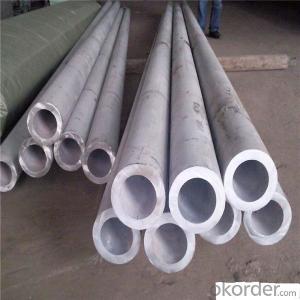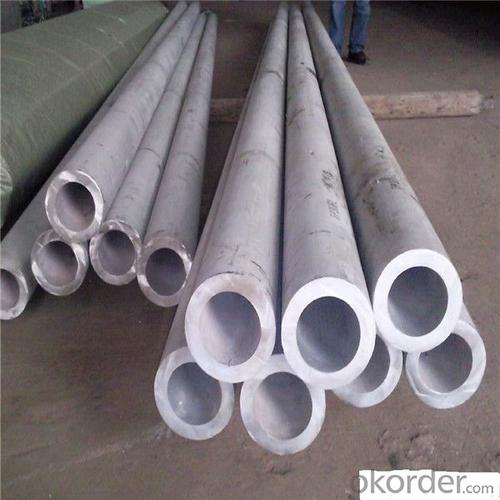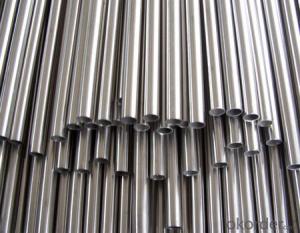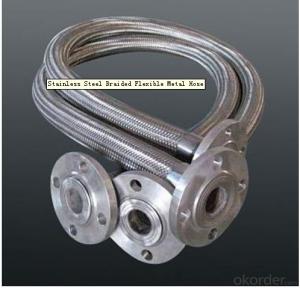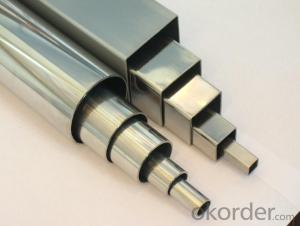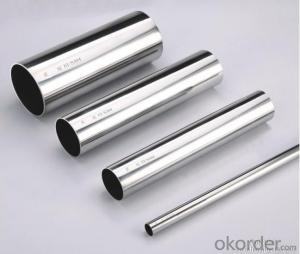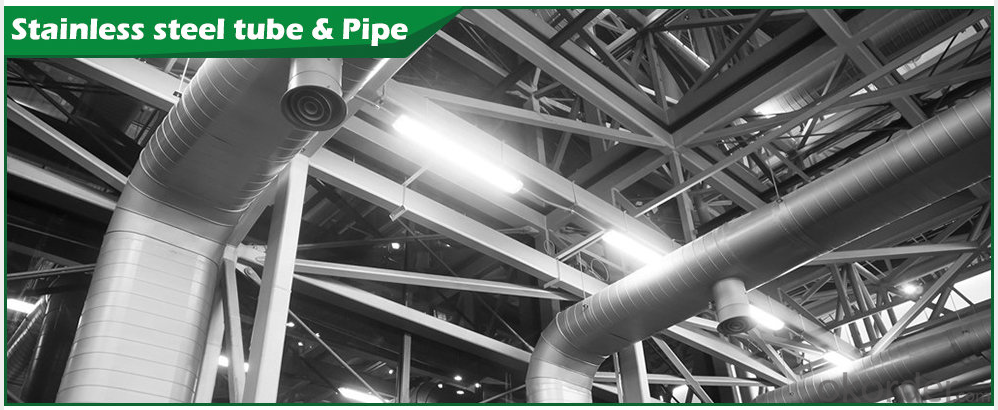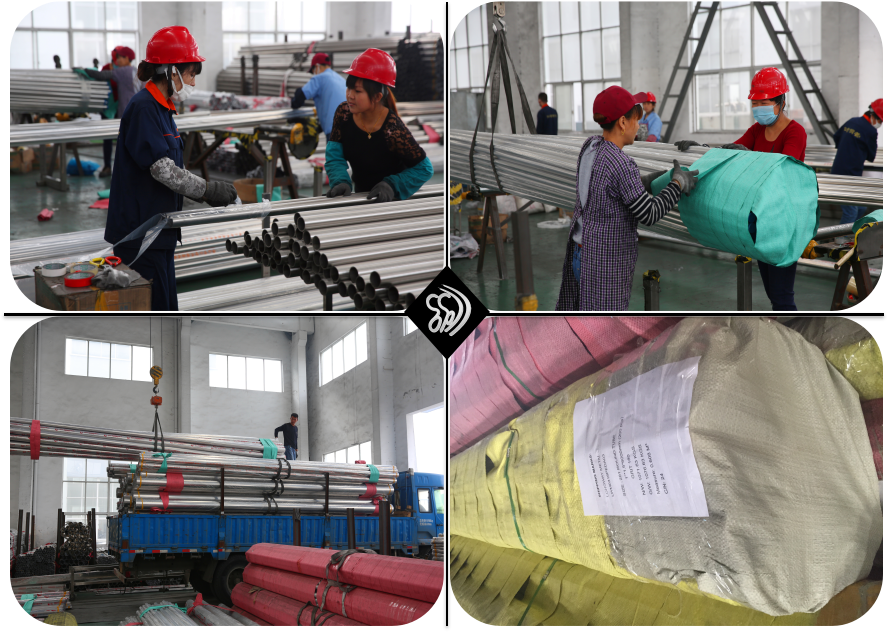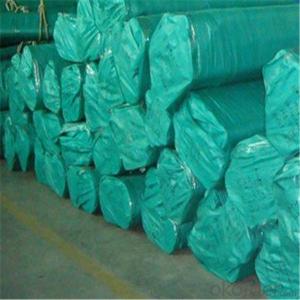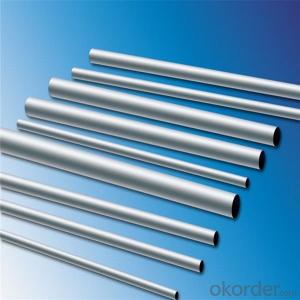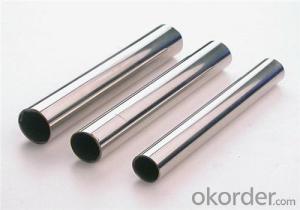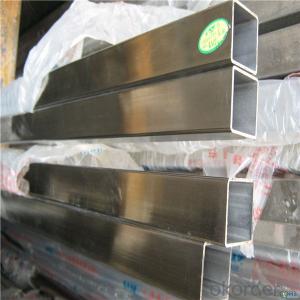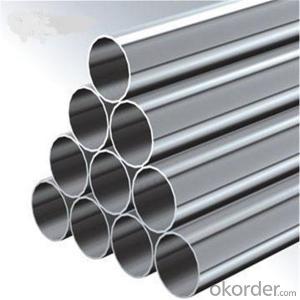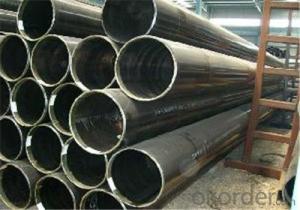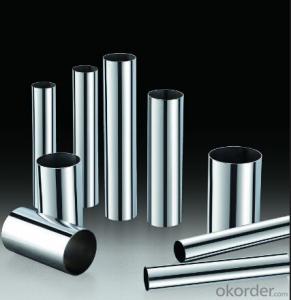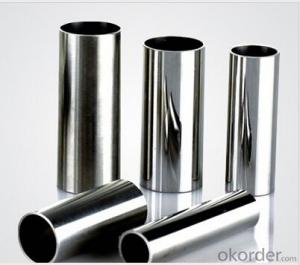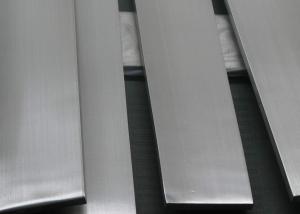304 Stainless Steel Seamless Pipe in Wuxi ,China
- Loading Port:
- Shanghai
- Payment Terms:
- TT OR LC
- Min Order Qty:
- 6 m.t.
- Supply Capability:
- 25000 m.t./month
OKorder Service Pledge
OKorder Financial Service
You Might Also Like
Specification
316 stainless steel pipe
Product Description
Name | Stainless Steel Seamless & Welded Tube &Pipe | |||||
Items | Square tubes, round tubes, oval pipes, special shaped pipes, empaistic pipes, fittings | |||||
Standard | ASTM A554, A249, A269 and A270 | |||||
Material Grade | 201: Ni 0.8%~1% | |||||
202: Ni 3.5%~4.5% | ||||||
304: Ni 8%, Cr 18% | ||||||
316: Ni 10%, Cr 18% | ||||||
316L: Ni10%~14% | ||||||
430: Cr16%~18% | ||||||
Outer Diameter | 9.53mm--159mm | |||||
Thickness | 0.3mm - 3.0mm | |||||
Length | 6m or as customers' request | |||||
Tolerance | a) Outer Diameter: +/- 0.2mm | |||||
b) Thickness: +/- 0.02mm | ||||||
c) Length: +/- 5mm | ||||||
Surface | 180G, 240G, 320G Satin / Hairline 400G, 600G Mirror finish | |||||
Application | handrail,railing, staircase, weldmesh screen,door,window, balcony,fence,bench,furniture,etc | |||||
Test | Squash test, extended test, water pressure test, crystal rot test, heat treatment, NDT | |||||
Chemical Composition of Material | Material
Composition | 201 | 202 | 304 | 316L | 430 |
C | ≤0.15 | ≤0.15 | ≤0.08 | ≤0.035 | ≤0.12 | |
Si | ≤1.00 | ≤1.00 | ≤1.00 | ≤1.00 | ≤1.00 | |
Mn | 5.5-7.5 | 7.5-10 | ≤2.00 | ≤2.00 | ≤1.00 | |
P | ≤0.06 | ≤0.06 | ≤0.045 | ≤0.045 | ≤0.040 | |
S | ≤0.03 | ≤0.03 | ≤0.030 | ≤0.030 | ≤0.030 | |
Cr | 13-15 | 14-17 | 18-20 | 16-18 | 16-18 | |
Ni | 0.7-1.1 | 3.5-4.5 | 8-10.5 | 10-14 | ||
Mo | 2.0-3.0 | |||||
Mechanical Property | Material Item | 201 | 202 | 304 | 316 | |
Tensile Strength | ≥535 | ≥520 | ≥520 | ≥520 | ||
Yield Strength | ≥245 | ≥205 | ≥205 | ≥205 | ||
Extension | ≥30% | ≥30% | ≥35% | ≥35% | ||
Hardness (HV) | <105< span=""> | <100< span=""> | <90< span=""> | <90< span=""> | ||
Mechanical Properties: MaterialY.S(N/MM2)T.S(N/MM2)ElongationHRB304>205>520>40<95304L>175>480>40<90316>205>520>40<90316L>175>480>40<90430>205>450>22<89
Applications: SurfaceApplication2BMedical equipment, Food industry, Construction material, Kitchen utensils.BAKitchen utensils, Electric equipment, Building construction.No.1Chemical tank, pipe.No.4Kitchen utensils, Building construction,Medical equipment.HLBuilding Construction.
|
| ---Packing & Transport--- Packing
Transport
|
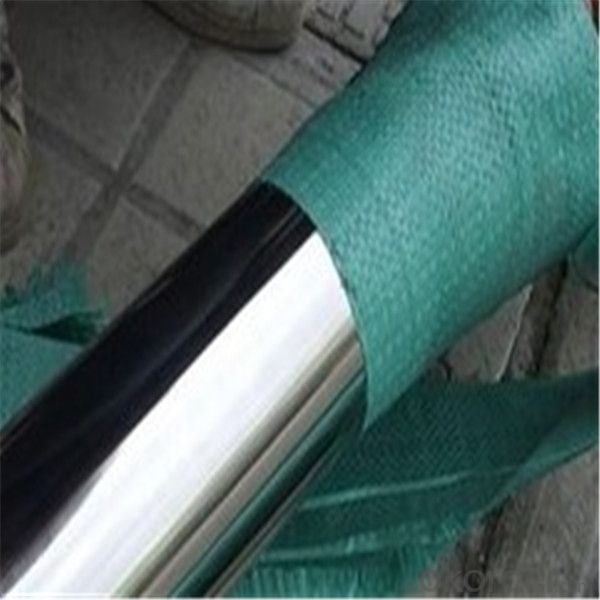
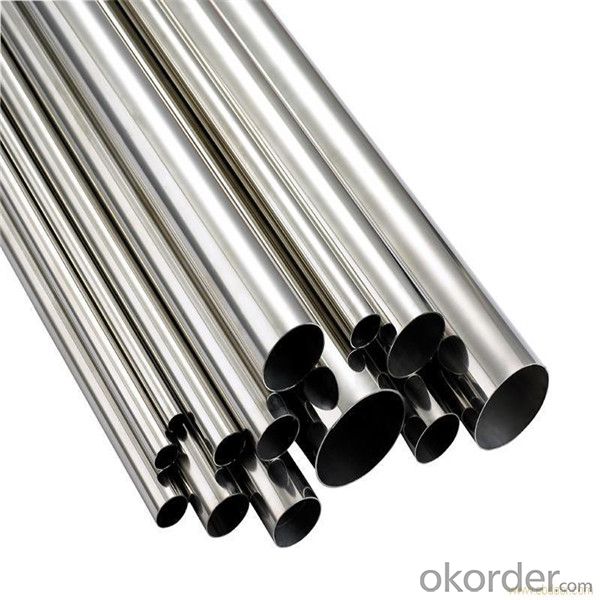
- Q: Can stainless steel pipes be used for steam piping?
- Indeed, steam piping can utilize stainless steel pipes. Renowned for its exceptional resistance to corrosion, stainless steel proves to be a superb option for steam-related purposes. In order to endure elevated temperatures and pressure, steam piping necessitates materials capable of withstanding such conditions, a criterion that stainless steel effortlessly meets. Furthermore, stainless steel pipes boast commendable thermal conductivity, ensuring the efficient transfer of heat within steam systems. Nevertheless, it is crucial to carefully deliberate the specific grade of stainless steel and its compatibility with steam applications, as certain grades may prove more suitable than others based on the system's conditions and requirements.
- Q: Can stainless steel pipes be used for underground sewage systems?
- Certainly! Underground sewage systems can indeed utilize stainless steel pipes. Due to its exceptional durability and resistance to corrosion, stainless steel is an ideal material for underground applications that frequently encounter moisture and chemicals. It can effectively endure the demanding conditions of sewage systems, including the erosive properties of wastewater and the pressure exerted by the soil. Moreover, stainless steel pipes boast an extensive lifespan, minimizing the necessity for frequent replacements and upkeep. Nevertheless, it is crucial to carefully assess the unique prerequisites and regulations of the local sewage system, and seek advice from experts to guarantee appropriate installation and compatibility with other system components.
- Q: Can stainless steel pipes be used for construction purposes?
- Indeed, construction purposes can certainly make use of stainless steel pipes. This material, known for its exceptional durability and resistance to corrosion, proves itself suitable for a wide range of construction applications. It finds common employment in structural projects, providing dependable support for building frameworks, handrails, and support structures. Moreover, stainless steel pipes serve vital roles in plumbing systems, drainage systems, and HVAC systems. Notably, they often take precedence in construction endeavors that prioritize hygiene and cleanliness, such as hospitals, food processing plants, and laboratories. In summary, stainless steel pipes deliver exceptional strength, longevity, and resistance to rust and corrosion, rendering them an unwavering choice for construction endeavors.
- Q: Can stainless steel pipes be used for cryogenic storage tanks?
- Yes, stainless steel pipes can be used for cryogenic storage tanks. Stainless steel is known for its excellent corrosion resistance, durability, and strength, which make it suitable for storing extremely cold liquids or gases. Cryogenic storage tanks are designed to store materials at very low temperatures, typically below -150 degrees Celsius. Stainless steel pipes are capable of withstanding these low temperatures without becoming brittle or losing their mechanical properties. Additionally, stainless steel has low thermal conductivity, which helps to minimize heat transfer and maintain the desired temperature inside the storage tank. Therefore, stainless steel pipes are commonly used in cryogenic storage tanks to ensure the safe and efficient storage of cryogenic materials.
- Q: Can stainless steel pipes be used in nuclear power plants?
- Yes, stainless steel pipes can be used in nuclear power plants. Stainless steel is often used in the construction of nuclear power plants due to its excellent corrosion resistance, high strength, and ability to withstand high temperatures. It is particularly suitable for applications involving the transport of coolant, steam, and other fluids within the plant.
- Q: What are the temperature limitations of stainless steel pipes?
- The temperature limitations of stainless steel pipes depend on the specific grade of stainless steel used. Generally, stainless steel pipes can withstand high temperatures up to 1200°F (649°C) without experiencing significant deformation or damage. However, the maximum operating temperature can vary depending on the alloy composition and its mechanical properties. For instance, austenitic stainless steels, such as grades 304 and 316, are commonly used in various industrial applications and can typically handle temperatures up to 1500°F (816°C). These grades offer good corrosion resistance and excellent toughness, making them suitable for high-temperature environments. On the other hand, ferritic and martensitic stainless steels, like grades 409 and 410, have lower resistance to high temperatures compared to austenitic stainless steels. They can generally withstand temperatures up to 1200°F (649°C) before significant loss of strength occurs. It is important to note that prolonged exposure to high temperatures can cause stress corrosion cracking and reduce the overall lifespan of stainless steel pipes. Therefore, it is crucial to consider the specific application and choose an appropriate grade of stainless steel that can withstand the desired temperature range. Consulting with a materials engineer or referring to industry standards and guidelines is recommended to ensure safe and reliable operation of stainless steel pipes at elevated temperatures.
- Q: Can stainless steel pipes be embossed?
- Certainly, it is possible to emboss stainless steel pipes. Embossing refers to the technique of raising or pressing a pattern or design into a material like stainless steel, with the intention of creating a decorative or functional effect. This technique can be applied to a wide range of metal surfaces, including stainless steel pipes. To achieve this, specialized machinery and tools are employed to imprint the desired design onto the pipe's surface. The purpose of embossing can be twofold: it may enhance the visual appeal and texture for aesthetic reasons, or provide functional benefits like improved grip and slip prevention. In summary, embossing stainless steel pipes is indeed viable and can yield diverse desired outcomes.
- Q: What are the different grades of stainless steel pipes?
- There are several different grades of stainless steel pipes available, each with its own unique properties and applications. The most commonly used grades include: 1. Grade 304: This is the most widely used stainless steel grade for pipes. It offers excellent corrosion resistance, good heat resistance, and high strength. Grade 304 is suitable for a wide range of applications, including water pipes, food processing equipment, and architectural structures. 2. Grade 316: This grade is known for its superior corrosion resistance, particularly in environments with high chloride content. Grade 316 pipes are often used in marine applications, chemical processing plants, and medical equipment where resistance to pitting and crevice corrosion is crucial. 3. Grade 321: This grade is stabilized with titanium, which makes it resistant to intergranular corrosion after exposure to high temperatures. Grade 321 pipes are commonly used in applications involving elevated temperatures, such as exhaust systems, furnace parts, and heat exchangers. 4. Grade 409: This grade is specifically designed for high-temperature applications such as automotive exhaust systems. It offers good heat resistance and is highly resistant to corrosion and oxidation. 5. Grade 904L: This grade is a highly alloyed austenitic stainless steel that provides excellent resistance to a wide range of corrosive environments, including sulfuric acid, phosphoric acid, and chloride solutions. Grade 904L pipes are often used in chemical processing plants, pulp and paper industry, and desalination plants. It is important to select the appropriate grade of stainless steel pipe based on the specific requirements of your application to ensure optimal performance and longevity.
- Q: Are stainless steel pipes resistant to chemical corrosion?
- Stainless steel pipes possess resistance against chemical corrosion. This attribute is a result of the abundant chromium content within stainless steel, which generates a safeguarding oxide layer on the pipe's surface. This layer acts as a barrier, effectively obstructing chemical substances from interacting with the steel beneath and inducing corrosion. Moreover, stainless steel pipes exhibit resistance against alternative corrosion types, including rusting, thereby establishing their widespread utilization across industrial, commercial, and residential sectors where exposure to chemical substances is anticipated.
- Q: What is the difference between nominal diameter and actual diameter in stainless steel pipes?
- The difference between nominal diameter and actual diameter in stainless steel pipes lies in their respective definitions and practical applications. Nominal diameter, also known as nominal size, refers to the designation given to a pipe based on its approximate internal diameter. It is a standardized measurement used in industry to facilitate communication and categorization of pipes. The nominal diameter is typically expressed in inches or millimeters, and it is often rounded to the nearest whole number. For example, a pipe with a nominal diameter of 2 inches would typically have an internal diameter close to, but not exactly, 2 inches. On the other hand, actual diameter refers to the precise measurement of the internal diameter of a stainless steel pipe. It is determined by physically measuring the inside diameter using tools such as calipers or a micrometer. The actual diameter provides an accurate measurement of the pipe's internal size, allowing for precise calculations and fitting purposes. The difference between nominal diameter and actual diameter can vary depending on the manufacturing process and the specific tolerances of the stainless steel pipes. In general, the actual diameter is slightly smaller than the nominal diameter due to factors such as the thickness of the pipe's walls and the manufacturing tolerances. The difference between the two measurements is known as the nominal wall thickness. Understanding the difference between nominal diameter and actual diameter is crucial in various industries, especially in plumbing, construction, and engineering. It helps ensure that pipes are correctly selected, installed, and connected, avoiding any potential issues related to misalignment, leakage, or improper fittings. Therefore, it is important to consider both the nominal diameter and actual diameter when working with stainless steel pipes to ensure the proper functioning and structural integrity of the system.
Send your message to us
304 Stainless Steel Seamless Pipe in Wuxi ,China
- Loading Port:
- Shanghai
- Payment Terms:
- TT OR LC
- Min Order Qty:
- 6 m.t.
- Supply Capability:
- 25000 m.t./month
OKorder Service Pledge
OKorder Financial Service
Similar products
Hot products
Hot Searches
Related keywords
